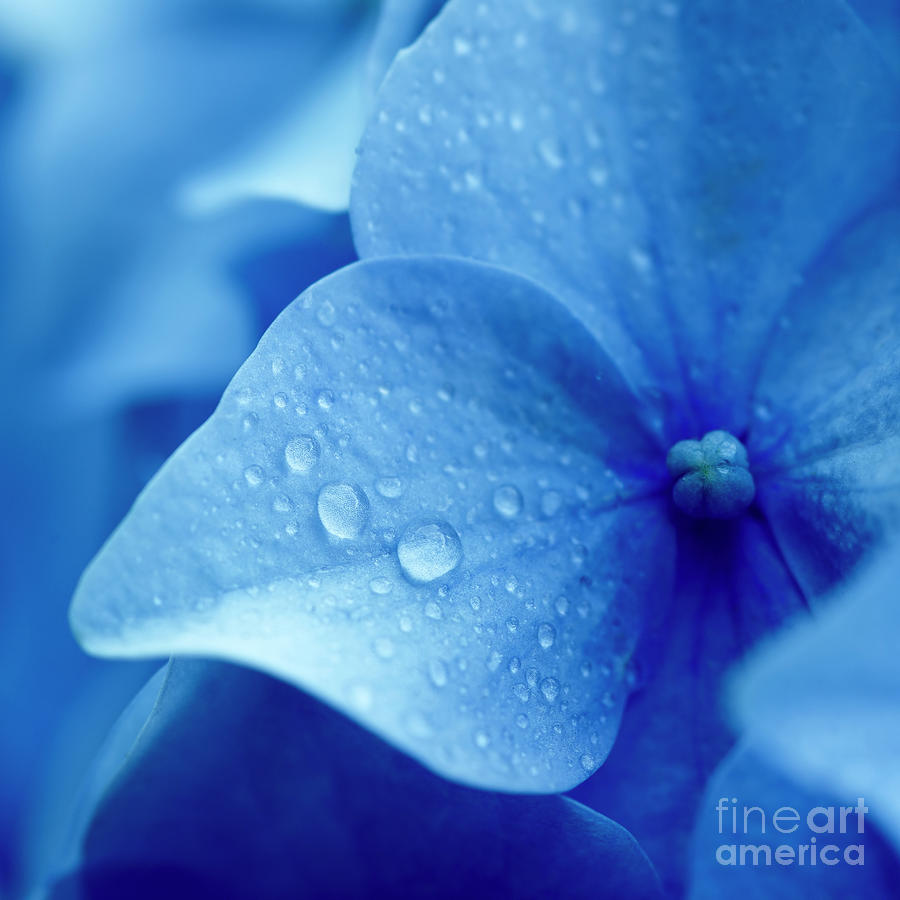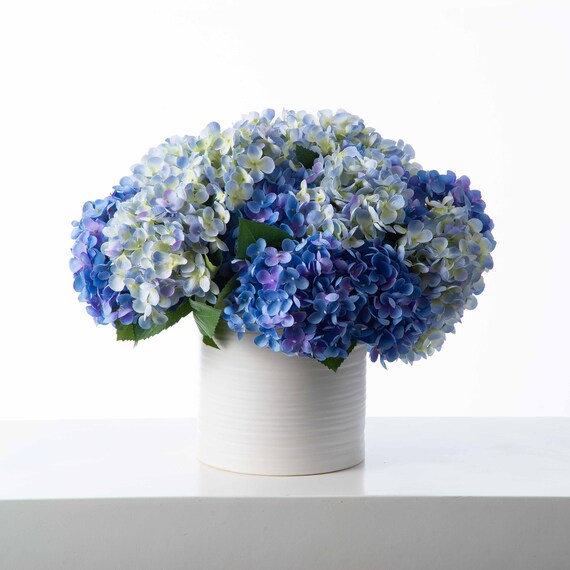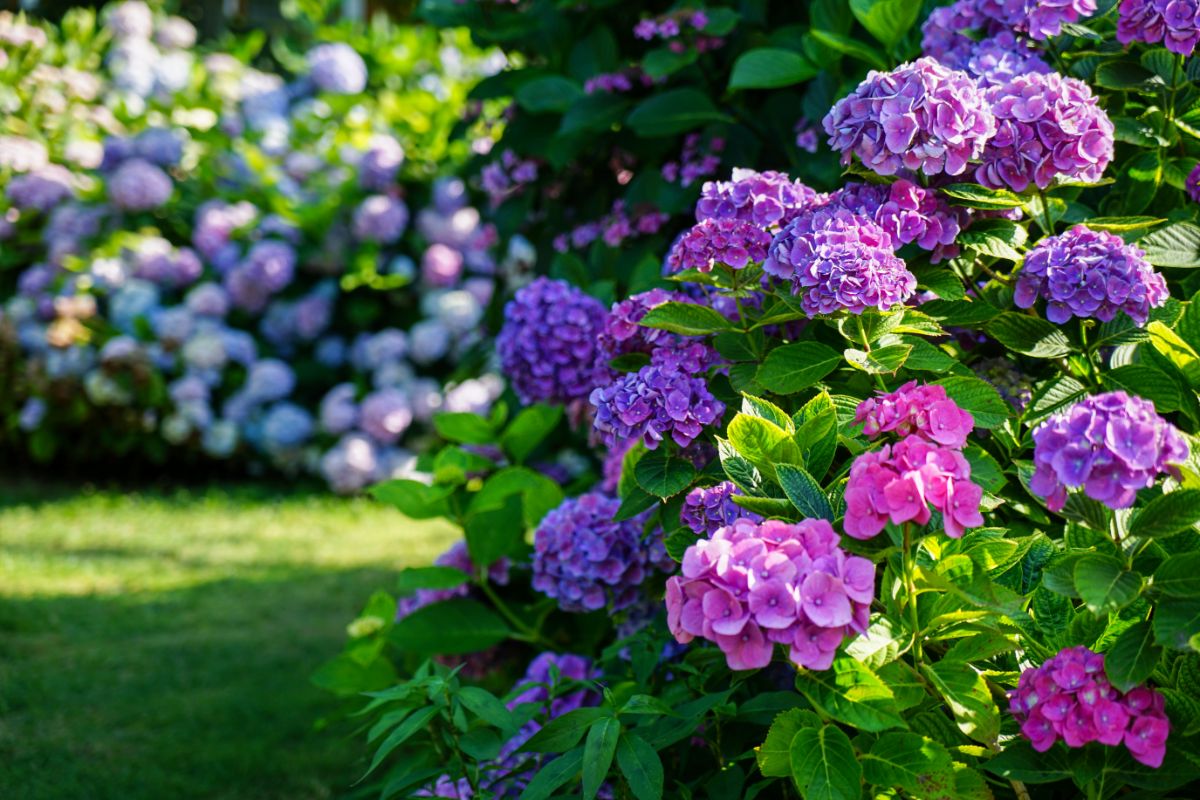The Secrets To Growing Vibrant Blue And Purple Hydrangeas
The Secrets to Growing Vibrant Blue and Purple Hydrangeas
Hydrangeas are a popular choice for gardeners because of their large, showy blooms that come in a variety of colors. But did you know that the color of hydrangea flowers can be changed by adjusting the pH of the soil?
In this blog post, we will discuss the secrets to growing vibrant blue and purple hydrangeas. We will cover topics such as:
- The science behind hydrangea flower color
- How to test the pH of your soil
- How to make your soil more acidic or alkaline
- How to fertilize hydrangeas for optimal color
- Other tips for growing beautiful hydrangeas
The Science Behind Hydrangea Flower Color
The color of hydrangea flowers is determined by the levels of aluminum and calcium in the soil. When the soil is acidic, hydrangeas produce blue flowers. When the soil is alkaline, hydrangeas produce pink flowers. And when the soil pH is in between, hydrangeas produce purple flowers.
The reason for this is that aluminum is more soluble in acidic soil. When hydrangeas are exposed to aluminum, they produce anthocyanins, which are pigments that give the flowers their blue color. In alkaline soil, there is less aluminum available, so the flowers produce fewer anthocyanins and appear pink.
How to Test the pH of Your Soil
The first step to growing vibrant blue or purple hydrangeas is to test the pH of your soil. You can do this by purchasing a soil pH test kit from your local garden center. Simply follow the instructions on the kit to test a sample of your soil.
The pH scale ranges from 0 to 14, with 7 being neutral. Soils with a pH of less than 7 are acidic, while soils with a pH of more than 7 are alkaline. Hydrangeas prefer a soil pH of 5.5 to 6.5.
How to Make Your Soil More Acidic or Alkaline
If your soil pH is not in the ideal range for hydrangeas, you can adjust it by adding amendments to the soil. To make your soil more acidic, you can add sulfur or aluminum sulfate. To make your soil more alkaline, you can add lime or dolomite lime.
When adding amendments to the soil, it is important to follow the directions on the product label. Over-amending the soil can damage the plants.
How to Fertilize Hydrangeas for Optimal Color
In addition to adjusting the pH of the soil, you can also fertilize hydrangeas to promote vibrant flower color. Hydrangeas prefer a fertilizer that is high in nitrogen and potassium, with a low amount of phosphorus.
You can fertilize hydrangeas in the spring and summer, following the directions on the fertilizer label. Be sure to water the plants thoroughly after fertilizing.
Other Tips for Growing Beautiful Hydrangeas
In addition to adjusting the pH of the soil, fertilizing, and watering, there are a few other things you can do to grow beautiful hydrangeas:
- Plant hydrangeas in full sun or partial shade.
- Provide the plants with plenty of water, especially during hot, dry weather.
- Mulch around the plants to help retain moisture and suppress weeds.
- Deadhead spent blooms to encourage new growth.
- Prune hydrangeas in the late winter or early spring.
With a little care and attention, you can enjoy vibrant blue or purple hydrangeas for years to come.
If you're looking for a beautiful and vibrant addition to your garden, look no further than blue and purple hydrangeas. These stunning flowers come in a variety of shapes and sizes, and they can add a touch of elegance to any landscape.
But did you know that the color of hydrangeas can actually be changed? That's right, the pH level of the soil can affect the color of the blooms. In acidic soil, hydrangeas will turn blue or lavender-blue. In alkaline soil, they will turn pink or red. And in neutral soil, they will be a mix of both colors.
So, if you're dreaming of a garden full of blue and purple hydrangeas, the first step is to test the pH level of your soil. You can do this with a simple test kit that you can find at most garden stores. Once you know the pH level of your soil, you can adjust it accordingly.
If you have acidic soil, you can add garden sulfur or aluminum sulfate to make it more alkaline. And if you have alkaline soil, you can add lime to make it more acidic.
Once you've adjusted the pH level of your soil, you can plant your blue and purple hydrangeas. Be sure to plant them in a spot that gets plenty of sunlight. And water them regularly, especially during the summer months.
With a little care and attention, you'll be enjoying beautiful blue and purple hydrangeas in no time.
For more information about blue and purple hydrangeas, visit . You'll find everything you need to know about planting, caring for, and troubleshooting these stunning flowers.
FAQ of blue and purple hydrangeas
5 Most Frequently Asked Questions About Blue and Purple Hydrangeas
- What makes hydrangeas blue or purple?
The color of hydrangea blooms is determined by the pH of the soil. In acidic soil (pH below 6.0), hydrangeas will bloom blue. In alkaline soil (pH above 7.0), hydrangeas will bloom pink. Neutral soil (pH 6.0-7.0) can produce blooms of either color.
- How do I make my hydrangeas blue?
If you have hydrangeas that are blooming pink, you can make them blue by adding aluminum sulfate to the soil. Aluminum sulfate is a chelating agent that binds to aluminum ions in the soil and makes them available to the hydrangea plant. To make your hydrangeas blue, mix 1/4 ounce of aluminum sulfate with 1 gallon of water and pour the solution around the base of the plant. You can do this in the spring, as soon as the plant begins to grow, or in the fall, after the plant has finished blooming.
- How do I make my hydrangeas purple?
If you have hydrangeas that are blooming blue, you can make them purple by adding lime to the soil. Lime raises the pH of the soil, which will cause the hydrangeas to bloom purple. To make your hydrangeas purple, mix 1/4 ounce of lime with 1 gallon of water and pour the solution around the base of the plant. You can do this in the spring, as soon as the plant begins to grow, or in the fall, after the plant has finished blooming.
- How do I care for blue and purple hydrangeas?
Blue and purple hydrangeas are relatively easy to care for. They need full sun or partial shade and well-drained soil. They should be watered regularly, especially during hot, dry weather. In the spring, you can fertilize them with a balanced fertilizer. To encourage blue blooms, add aluminum sulfate to the soil. To encourage purple blooms, add lime to the soil.
- What are some common pests and diseases of blue and purple hydrangeas?
Some common pests of blue and purple hydrangeas include aphids, scale insects, and Japanese beetles. These pests can be controlled with insecticidal soap or neem oil. Some common diseases of blue and purple hydrangeas include leaf spot, powdery mildew, and rust. These diseases can be controlled with fungicides.
Image of blue and purple hydrangeas
Here are 5 different images of blue and purple hydrangeas from Pinterest:
- A large, full bush of blue hydrangeas in bloom.
- A close-up of a single blue hydrangea flower, showing its delicate petals and stamens.

- A cluster of purple hydrangeas in bloom, surrounded by green leaves.

- A vase of mixed blue and purple hydrangeas, arranged in a beautiful bouquet.

- A field of blue and purple hydrangeas in full bloom, swaying in the breeze.

Post a Comment for "The Secrets To Growing Vibrant Blue And Purple Hydrangeas"